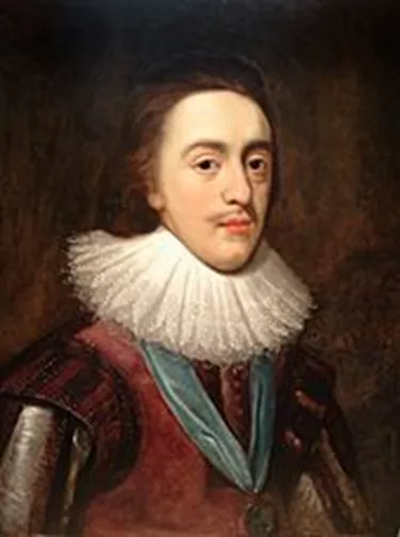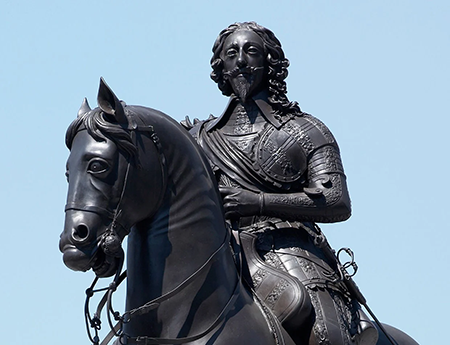



King Charles I – Quick Stats




Born: November 19, 1600
Rule and Conflicts with Parliament
From the outset, Charles I faced opposition from Parliament. He firmly believed that his authority was God-given and beyond parliamentary interference, putting him at odds with the English Parliament, which was growing in power and influence.
From the outset, Charles I faced opposition from Parliament. He firmly believed that his authority was God-given and beyond parliamentary interference, putting him at odds with the English Parliament, which was growing in power and influence.
King Charles I: The Monarch Who Lost His Crown and His Head
The Eleven Years' Tyranny (1629–1640)
Frustrated by parliamentary resistance, Charles dissolved Parliament in 1629 and ruled without it for eleven years, a period known as the Personal Rule or Eleven Years' Tyranny.
Frustrated by parliamentary resistance, Charles dissolved Parliament in 1629 and ruled without it for eleven years, a period known as the Personal Rule or Eleven Years' Tyranny.
Charles also attempted to impose religious uniformity across England and Scotland, favoring High Anglicanism, which was seen as too close to Catholicism. His introduction of the Anglican prayer book in Scotland in 1637 led to widespread outrage and the Bishops’ Wars (1639–1640). These conflicts drained the royal treasury and forced Charles to recall Parliament in 1640, ending his personal rule.
The English Civil War (1642–1651)
The Long Parliament, convened in 1640, sought to limit Charles’s power, leading to an escalating crisis. In 1641, tensions boiled over when Charles attempted to arrest five members of Parliament, a move that horrified many and made conflict inevitable.
The Long Parliament, convened in 1640, sought to limit Charles’s power, leading to an escalating crisis. In 1641, tensions boiled over when Charles attempted to arrest five members of Parliament, a move that horrified many and made conflict inevitable.
Early Life and Ascension to the Throne
King Charles I was born on November 19, 1600, at Dunfermline Palace in Scotland. He was the second son of King James VI of Scotland (later James I of England) and Anne of Denmark. As the younger son, Charles was not originally expected to inherit the throne; however, the untimely death of his elder brother, Henry Frederick, Prince of Wales, in 1612 made him the heir apparent.
King Charles I was born on November 19, 1600, at Dunfermline Palace in Scotland. He was the second son of King James VI of Scotland (later James I of England) and Anne of Denmark. As the younger son, Charles was not originally expected to inherit the throne; however, the untimely death of his elder brother, Henry Frederick, Prince of Wales, in 1612 made him the heir apparent.
Died: January 30, 1649 (executed)
Mother: Anne of Denmark
Father: King James I
Wife: Henrietta Maria of France
Children: Charles II
James II
During this time, he relied on questionable means to raise revenue, including levying ship money, a tax traditionally used for naval defense but now extended to inland counties. This move was widely opposed and led to legal challenges, most notably by John Hampden, who refused to pay.
Trial and Execution
In January 1649, Charles I was brought before a specially convened court, accused of being a "tyrant, traitor, murderer, and public enemy to the good people of this nation." He refused to recognize the court’s legitimacy, maintaining that he ruled by divine right.
In January 1649, Charles I was brought before a specially convened court, accused of being a "tyrant, traitor, murderer, and public enemy to the good people of this nation." He refused to recognize the court’s legitimacy, maintaining that he ruled by divine right.
Legacy and Aftermath
After Charles’s execution, England briefly became a republic known as the Commonwealth under the leadership of Oliver Cromwell. The monarchy was abolished, and Charles’s son, Charles II, was forced into exile. However, after Cromwell’s death and the failure of the republican experiment, the monarchy was restored in 1660 under Charles II.
After Charles’s execution, England briefly became a republic known as the Commonwealth under the leadership of Oliver Cromwell. The monarchy was abolished, and Charles’s son, Charles II, was forced into exile. However, after Cromwell’s death and the failure of the republican experiment, the monarchy was restored in 1660 under Charles II.
Charles I’s reign remains one of the most controversial in English history. His unwavering belief in the divine right of kings and his resistance to parliamentary authority directly contributed to the English Civil War, the temporary overthrow of the monarchy, and his own tragic demise. Despite his flaws, he is remembered for his patronage of the arts and his role in shaping constitutional debates that would later influence the development of modern British democracy.
His execution set a precedent that rulers could be held accountable by their subjects, a principle that would have lasting implications for the evolution of governance in England and beyond. Today, Charles I is often remembered as a king whose rigidity and failure to compromise led to his downfall, yet whose legacy played a crucial role in shaping the future of constitutional monarchy in Britain.
Charles grew up with a deep sense of royal authority and divine right, a principle instilled in him by his father. Educated in multiple disciplines, including languages, theology, and the arts, he struggled with public speaking due to a lifelong speech impediment. His reserved nature and firm belief in absolute monarchy would later contribute to his turbulent reign.
He became King of England, Scotland, and Ireland in March 1625 following the death of his father. His ascension marked the continuation of the Stuart dynasty and an era of increasing tension between the monarchy and Parliament. At his coronation, Charles reinforced his belief in the divine right of kings, setting the stage for the power struggles that would define his rule.
Successor : Charles II (after the English Interregnum)
Predecessor : James I
Charles’s court was heavily influenced by his close advisors, particularly George Villiers, Duke of Buckingham, who was deeply unpopular among both Parliament and the English people.
Mary, Princess of Orange
One of Charles’s first major conflicts with Parliament arose over finances. Wars with Spain and France required substantial funds, but Parliament was reluctant to grant Charles unlimited taxation powers. In response, Charles resorted to controversial financial measures, such as forced loans and ship money, which many viewed as illegal. His unpopular fiscal policies fueled resentment among the English population and increased opposition within Parliament
In 1628, Charles was forced to agree to the Petition of Right, a document that limited the king’s ability to impose taxes without parliamentary consent, imprison subjects arbitrarily, quarter troops in private homes, and enforce martial law in peacetime. Though he initially accepted it, Charles later disregarded the petition, further straining relations with Parliament.
Charles I statue at Trafalger Square London
Despite his protests, he was found guilty and sentenced to death. On January 30, 1649, Charles was executed outside the Banqueting House at Whitehall in London. His beheading shocked Europe and marked the first and only time an English king was executed by his own people. As his severed head was held up for the crowd to see, a gasp reportedly went through the assembled spectators.
The execution of Charles I sent ripples through European politics. Monarchs across the continent were appalled that a sovereign could be legally put to death by his own subjects, setting a dangerous precedent for royal authority. The event also deepened existing divisions within England, as some viewed Charles as a martyr while others saw his execution as the rightful punishment for tyranny.
Elizabeth Stuart
Henry, Duke of Gloucester
Henrietta of England


By 1642, open war had broken out between the Royalists (Cavaliers), who supported the king, and the Parliamentarians (Roundheads), who sought greater parliamentary control. The war was marked by significant battles, including the Battle of Edgehill (1642), the Battle of Marston Moor (1644), and the decisive Battle of Naseby (1645), in which Oliver Cromwell’s New Model Army defeated the Royalists.
After years of conflict, Charles was captured in 1646 and imprisoned. Despite attempts to negotiate, he continued to conspire for a return to power, leading to the Second English Civil War (1648). Following another defeat, Charles was put on trial for treason.


